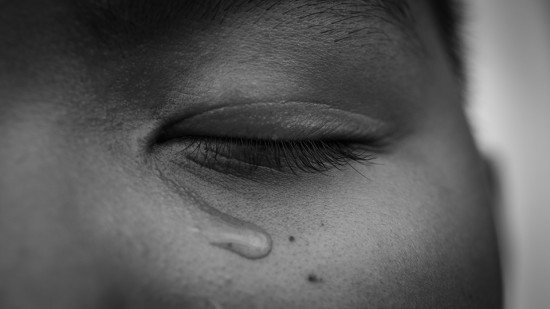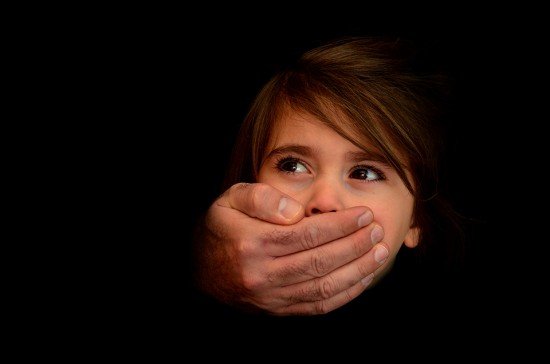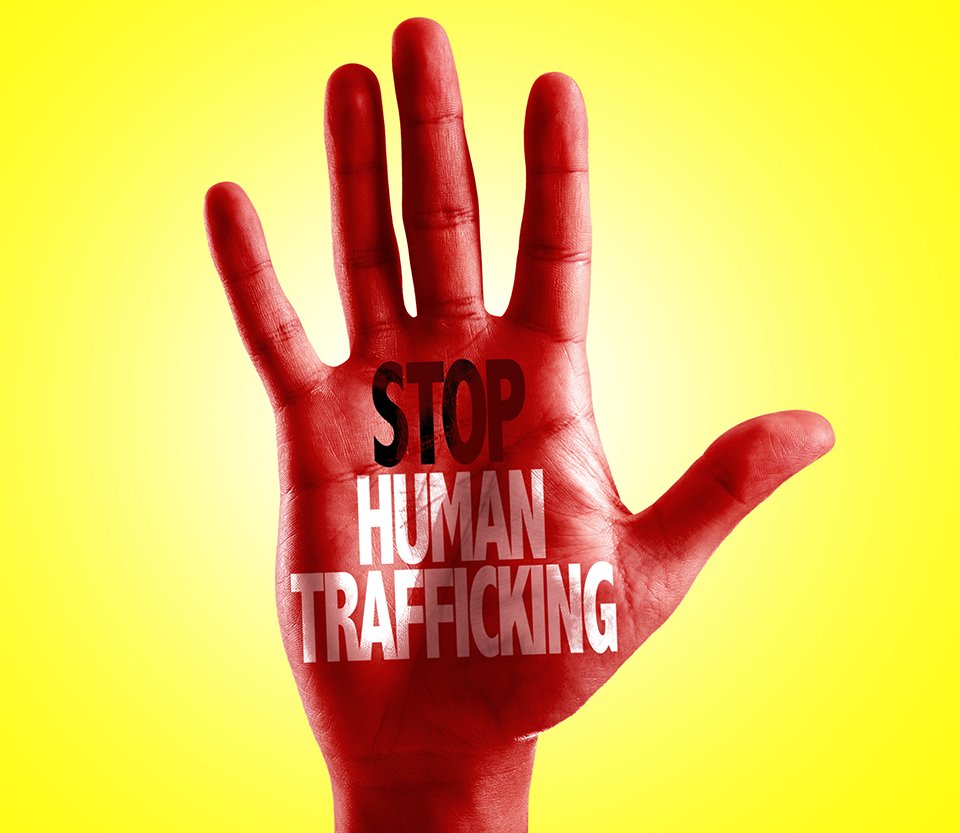Fairfax County bands together to fight a growing sex trafficking problem.

A 14-year-old girl stands at a bus stop alone one morning, her dark brown ponytail tied high up on her head. She shifts her legs, checks her text messages and waits for her school bus. A boy not much older than she walks by and stops, sizing her up. She glances back at him but doesn’t make eye contact. He waits to see if she looks again, and when she does, he compliments her.
“You’re really pretty,” he says. She looks down and blushes—now he knows he’s got her. Within a few weeks of talking to him over Facebook, this girl is nearly ready to be trafficked.
The above scenario seems like an unbelievable after-school TV special, but it’s a real scene Detective William Woolf of the Fairfax County Police Department says was described to him by a local teenage girl last year.
“The first myth is that it doesn’t happen here,” says Elizabeth Payne, the health, family life and physical education coordinator for Fairfax County Public Schools. “People think human trafficking is someone being grabbed or taken to another country, like in the movies. They don’t understand this is an issue here in our community.”
Human traffickers are trolling social media sites and approaching children online as well as in public, luring in potential victims with false compliments and flirtation techniques, says Woolf. And it’s happening right here in Northern Virginia—more than you might think.
“We’re the fifth-largest hub in the country,” says Woolf about the Metro-D.C. area.
In 2014, the D.C.-based nonprofit Polaris Project reported 810 human traffic tips about victims in Virginia via phone calls, text messages, emails and through the National Human Trafficking Resource Center website—almost a 100 percent increase from the year before. A quarter of those tips were about minors being trafficked with a large majority of minors being sex trafficked; in 2015 it’s at about 69 percent of the calls to the NHTRC.
“A lot of traffickers, on a technical level, are certainly psychopaths because they lack empathy—look at it from that angle,” says Woolf. “They’re master manipulators. They really are. They are very, very smooth and think on their feet. They know their game.”
The biggest window of opportunity traffickers exploit with minors, male or female (though victims are usually female), is low self-esteem. Woolf says traffickers look for telltale signs of this insecurity from potential victims, like how the teen described earlier averted her eyes to the floor when she was complimented. The potential victim could shuffle her feet or blush. She usually avoids eye contact, or she carries herself with hunched shoulders.
Once the traffickers have started a relationship with the victim, the “victims are often subjected to violence, threats, controlling behaviors, false promises, lies and manipulation perpetrated by their traffickers,” reads Polaris’ website. Northern Virginia human trafficking awareness campaign Just Ask’s website also notes that perpetrators start to alienate their victims from their friends and families. Traffickers might buy their victims expensive gifts or take them on vacation then start slowly putting victims in contact with strangers and start asking the potential victim for favors.
Traffickers discover and research a good number of these victims on social media networks like Facebook.
“We’re seeing the use of technology as a huge contributing factor to this. So many of our young perps are on social media, and they’re coming to [the victims] online,” says Woolf. “They’re gathering the necessary intelligence for traffickers to be able to know [the target’s] weaknesses and exploit them. This way, when they encounter them for the first time face-to-face, they know what to say because they know what [the targets] want to hear, their hopes [and] aspirations, and they use that information to exploit the situation.”
For the girl described before, her story ended well.
“Because of the Just Ask events we hosted, where she learned what trafficking was, she went to a counselor and a facilitator. She told them, ‘I think this is happening to me’ … and that allowed us to intervene,” says Woolf. “We got involved, took over the investigation and locked up the bad guy.”

Just Ask is just a public awareness campaign founded and run in part by Payne and members from the Fairfax County Police Department, other volunteers from the Fairfax County Public Schools and people in the community. They work to expose the growing prevalence of sex trafficking in Northern Virginia by organizing and producing educational media and events throughout the county, like videos and presentations for parents, students and community members at local high schools and churches.
The campaign was born right after Woolf helped uncover an infamous sex trafficking case in Northern Virginia’s front yard.
In 2012, Justin Strom and four other members of the Underground Gangster Crips in Alexandria were sentenced to prison for running a local sex trafficking ring of teenage girls and conspiracy to recruit over 800 more girls on Facebook and other social media sites.
The perpetrators lured girls in, drugged them, had sex with, or “demoed,” them and then forced them to have sex with multiple partners for money; some victims claimed to be subjected to cutting and extreme violence as well as being raped repeatedly. The victims said they were forced to have sex with as many as 30 men per day, and at least one of the victims was as young as 12 years old.
“People think it’s just poor people or people [who] get into it for the money. Most people can’t imagine their best friend, who has a stable income but just wants love, would fall prey,” says Kyra Beckman, former West Springfield High School student and organizer of the county’s first student-run club focusing on sex trafficking—Spartans Against Human Trafficking.
The gang-related pimps like Strom are only 20 percent of the puzzle, Woolf says. There are many other possibilities like family-controlled rings, sophisticated female-led brothels, older male-led rings who can pose as boyfriends to the victims and an upward trend toward exploiting the lesbian, gay, bisexual and transgender community.
“One case had over 60 victims,” says Woolf, “and that was not gang-related.”
After the Strom case, two major pieces in the fight against human trafficking came together in Fairfax County with the formation of the FCPS sex trafficking program and a Fairfax County Police Human Trafficking Unit. The schools, police and state government are all working to address the problem, even if some of the resources are limited.
In October 2013, the Fairfax County Police Department was awarded $500,000 to fund the Human Trafficking Unit. Today, the unit consists of just one man: Woolf. Up until the summer of 2015, there had also been an FBI agent working alongside Woolf, but she has since been reassigned, he says.
Since its inception, Woolf’s unit has identified 128 local suspects and had 43 active cases as of December. Sadly, only 10 of those cases have come to arrest
because of the limited time and resources, which means there are many of these perpetrators—and victims—still out there.
“It is overwhelming,” Woolf says about his work. “They’ve dedicated a lot of resources to it. Is it enough? No. Is it ever enough? No.”
Along with Woolf’s tireless efforts, the school system has really stepped up in educating and helping sex trafficking victims and would-be victims, and a lot of that has to do with Payne.
“When we saw [the Strom case], I was in a position within the community that I started asking, ‘What are we going to do about this?’” Payne says. Payne got special services, the police department, school psychologists and counselors involved in developing and adopting lessons that would teach students what the signs for sex trafficking are and how to stop it from happening to them.
Other school systems in high sex-trafficking areas of the country, like Miami-Dade County’s system in Florida, have used awareness campaigns like poster contests and school assemblies to educate their students as well as online training for staff members for years. Locally, Prince William County Public School’s learning, health and physical education specialist, Beth Tomanek, noted her school system provides an educational program for teachers and has one for students underway as well. But no other county in the region or in the nation seems to come close to FCPS’ devotion to educating the youth on this issue.
In fact, Payne and Woolf say FCPS offers the most inclusive and extensive sex trafficking awareness and prevention lessons for high schoolers in the country.
“I think the schools have really stepped up to the plate and are extremely aggressive and effective,” says Woolf, who noted that in April 2015 four teens came forward about being involved in sex trafficking after he spoke at a school assembly to the students. “Slowly but surely, the schools are encouraging more conversation, and the more we as a community in Fairfax County, and as a whole in Northern Virginia, talk about it, the better we’re going to be able to respond to it. Traffickers are going to see what’s up and say, ‘Hey, we can’t operate here anymore.’”
The 2015-16 school year is the second year students will take part in the sex trafficking lessons, which were added to the health and family life curriculum in all of Fairfax County. The lessons were added for the sixth through 10th and 12th grade—11th grade just didn’t have enough time, Payne explains.
“We wanted to start in sixth grade because we wanted to reach them when they might be developmentally ready and are starting to babysit. [The children] are online and are not with their parents right there watching them,” says Payne.
The lessons are first introduced in sixth grade as part of what physical abuse is, and many of the lessons for ninth and 10th grade weave in these concepts of physical and mental abuse and how sex trafficking is a form of abuse. There is also a large emphasis on Internet safety in seventh and eighth grades and how sex traffickers work through social media. Students cap off their sex trafficking knowledge in 12th grade with lessons on the laws surrounding the issue. Teachers and staff members are also instructed on warning signs and prevention methods to help the students, says Payne.
Parents are also not left in the dark. They are invited to preview nights where they can learn about the lessons before the child attends class so the child and parents can have an open discussion about the topic ahead of time.
Parents can always opt their child out of any lesson within the health and family life education curriculum or the whole curriculum entirely, which also includes sections on drug education, sex and healthy relationships. In 2014, between 3 and 7 percent of the sixth graders were opted out of the FLE programs, but FCPS does not keep track of which FLE segment students were opted out of. For high schoolers, even fewer were opted out—somewhere around 1 to 2 percent, reports Payne.
“Awareness is the key,” says Beckman. “Once people are aware, the parents and children can protect themselves.”
A few years back, Beckman read the book “Half the Sky” by Nicholas Kristof and Sheryl WuDunn. She felt compelled to help raise awareness about women’s oppression afterward. The club soon turned its focus on sex trafficking after some guidance from her mother and Payne. Beckman quickly began speaking out all over the area at churches, school assemblies and Girl Scout troop meetings.
Since then, the Spartans Against Human Trafficking club has given out over 1,600 yellow Just Ask wristbands, helped with the formation of Just Ask’s public service announcements and outreach materials to children and sent hundreds of letters to sex trafficking victims across the globe.
And while local students, schools and police are all stepping up to fight this growing issue in our community, the state government is trying to play catch-up.
In March 2015, Virginia passed its first stand-alone anti-sex trafficking laws, House Bill 1964 and Senate Bill 1188. Up until then, Virginia was the only state in the continental U.S. not to have such a law. Only Hawaii remains now.
“It was really important because it’s laying the groundwork, the foundation, for helping and identifying victims,” says Christine Raino, director of public policy at Shared Hope International, a nonprofit that ran the Kids Are Not For Sale campaign in Virginia to help push state lawmakers toward adopting a sex trafficking law.
The law clearly defines sex trafficking a minor as a Class 3 felony and can help put the “johns” away for a long time—up to 20 years. The law also clearly states that any person who solicits, recruits or encourages anyone over 18 to engage in prostitution in exchange for money or other valuable items is committing a Class 5 felony.
“By having these laws, it increases the seriousness of buying sex with a minor,” explains Raino. “The low-level misdemeanor of having sex with a prostitute before did not accurately capture the crime. By enacting this law of buying commercial sex with a child, it heightens the penalty … This way you’re likely to improve [lower] the demand.”
Before the new law was passed, victims had to show they were forced or coerced into prostitution, which as a minor can be tough to do when it is a vulnerability like low self-esteem being manipulated and exploited.
Before the law was passed, Shared Hope International had given Virginia a D rating in their human trafficking report cards. Now we’re well on our way to much more satisfactory grade, says Raino.
“In NoVA, we’re attacking the issue more aggressively than some other counties,” says Woolf. “We’re going after it collaboratively, as a community. Everyone is coming together, which is key. Schools are working with police, who are working with social services, working with the courts—we’ve really been able to pull all those various disciplines to really fuel the lack of resources and motivate the whole community to respond to the issue.”
( January 2016 )


